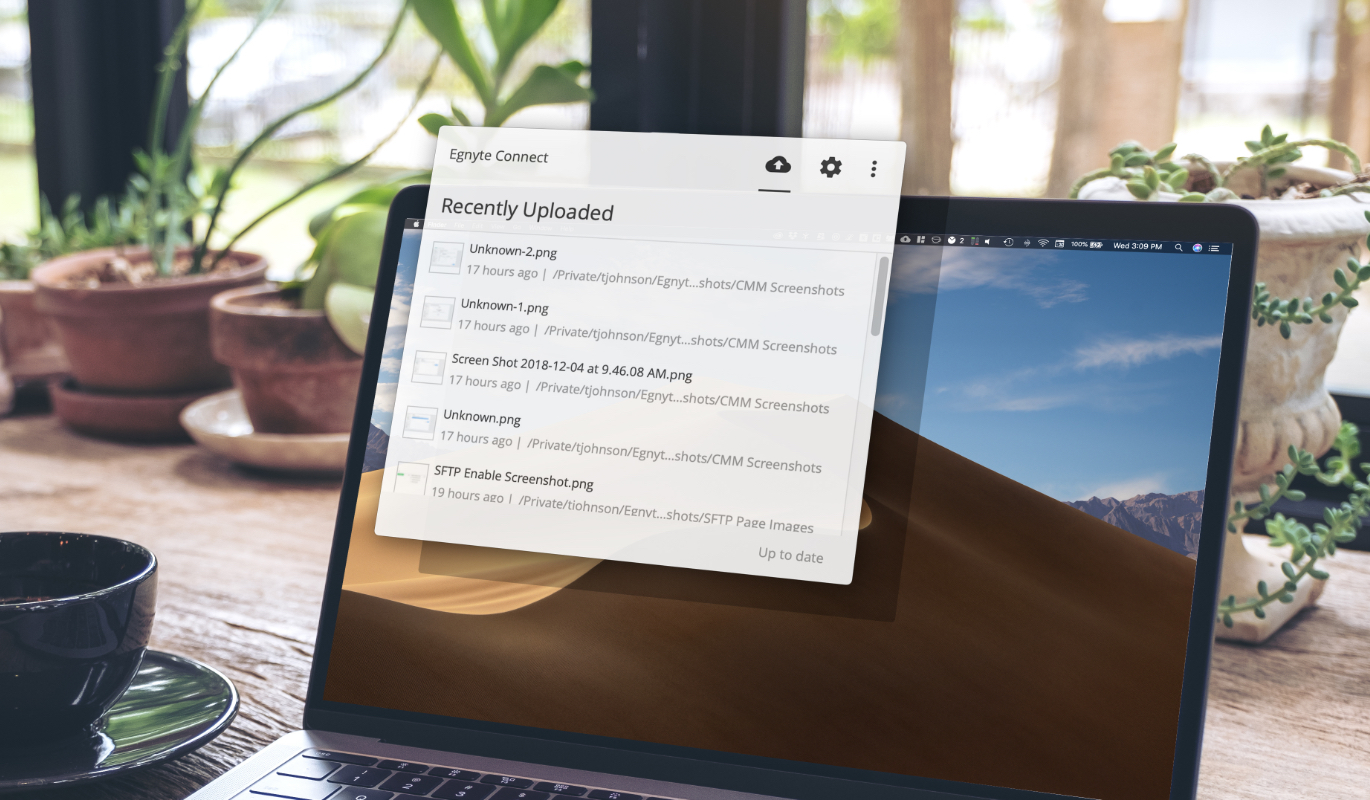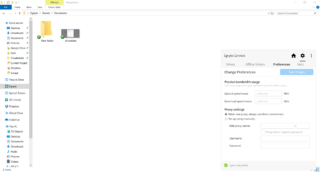

- EGNYTE DESKTOP SYNC LATEST VERSION HOW TO
- EGNYTE DESKTOP SYNC LATEST VERSION FREE
- EGNYTE DESKTOP SYNC LATEST VERSION MAC
All files are folders are visible to the administrator by default.Ī group is any logical grouping of users that satisfies your business needs, such as a department or project team. The only exception to this case is the administrator of the account. If the folder is not shared, then that folder and all files within it are not visible. In Egnyte, a folder and all files within are visible only when the folder is shared with a user (power user or standard user) or a group containing that user.
EGNYTE DESKTOP SYNC LATEST VERSION HOW TO
To learn how to share folders and the privileges associated with different access levels, please read this article. This article outlines how examples of how folder sharing works in Egnyte.
EGNYTE DESKTOP SYNC LATEST VERSION FREE
The folder, all of its sub-folders, and files will be immediately uploaded to the cloud and can then be deleted from your computer to free up space. Name the folder as desired and hit Enter to create the folder.įind the locally stored folder on your desktop.ĭrag and drop the folder to a folder through the Desktop App. Right click where you'd like the new folder to be located. Open file explorer or Finder on your desktop. Your file is now on the cloud and can be accessed from any device, anywhere.Ĭreating new folders in the cloud is the same process as on your desktop, making it easy to manage files in Egnyte instead of the desktop so you can free up disk space. Your file is uploaded to the cloud and is immediately available for your teammates to view, share, or edit.ĭrag and drop the file from the local storage to a folder on Egnyte. Select the drive mapped to Egnyte and navigate to the folder you'd like to save your file to. You can even draft new files and save your work directly to a folder in the cloud, right from your desktop.Ĭreate a new file in any compatible application like Microsoft Word.
EGNYTE DESKTOP SYNC LATEST VERSION MAC
Want to learn more? Click here to read the help desk article.Adding files using the Desktop App is a simple and fast way to move existing files to the cloud while still being able to use Windows File Explorer or Mac Finder. Maybe you don’t want to broadcast this as a supported feature, but it could help you look like a hero if the situation arises. Since each user has their own trash folder in Egnyte, it’s quite possible that the file in question is still accessible. The scary part of that approach is that it only takes a right click to clear out the trash, and all of those files are gone for good. We all know people that actually use their trash/recycle bin folder as part of their “file-management strategy.” It's akin to a parking lot for files they aren’t sure if they want to keep. Then, just load the desktop app on the new laptop and sync the files from the cloud back to the new laptop. The first step is for you (or the user, if you permit) to remotely wipe the content that’s synced to the laptop. It’s never a good situation, but it’s a lot less painful when all of the user’s important files are still accessible. We’ve all known people who have lost or had their laptop stolen. This means users have to spend less time thinking about technology, and more time doing what they get paid to do. Since the desktop folder is already synced to the Egnyte cloud (assuming you want it that way) the files stored there can be shared immediately without the user having to manually upload it first. Fortunately, by making the downloads folder a connected folder, they can just launch the mobile app, navigate to their corresponding downloads folder on Egnyte, and share the file.

The problem is that the file is still in the downloads folder. Let’s say one of your users is out of the office and they want to share a file with a colleague. Access a Downloaded File From Their Mobile Device

If you sync those files to the user’s private folder, not only will you have visibility into what they store on their laptops, you will be able to enforce your governance policies. But how do you know if your users are keeping sensitive files on their desktop? Most companies have no idea. Maintaining control of sensitive data is critical and threats are on the rise.


 0 kommentar(er)
0 kommentar(er)
